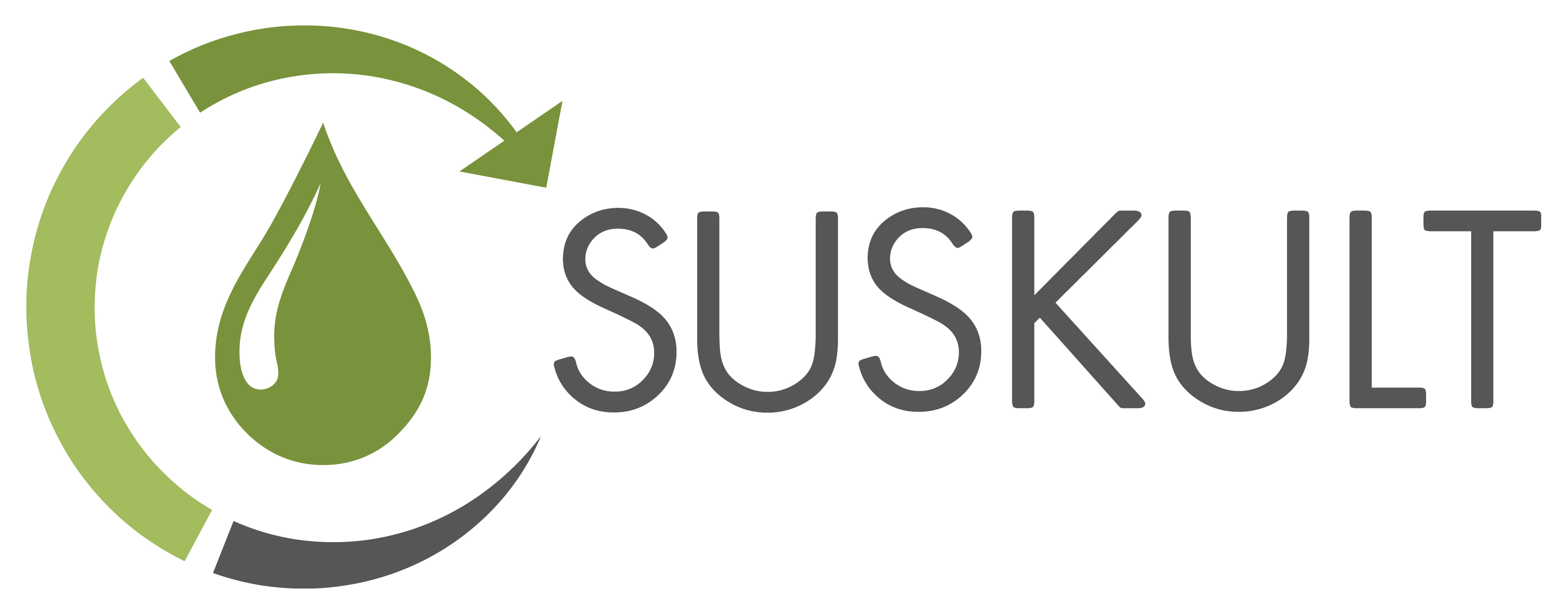2025
-M. Park, A. Somborn, D. Schlehuber, H. J. Lim, V. Keuter (2025). Non-destructive quantification of lutein and beta-carotene in spinach by Raman spectroscopy under optimized conditions for linear discriminant analysis, Food Chemistry, 2025, 146062, ISSN 0308-8146, https://doi.org/10.1016/j.foodchem.2025.146062.
-V. Dietze, P.-H. Feindt, H. Hess, V. Keuter, G. Mildenberger, S. Schwindenhammer (2025). Circular Economy in der Agrar- und Ernährungswirtschaft? Eine vergleichende Analyse von drei kreislaufbasierten Innovationen in Deutschland, in: INNOVATIVE KONZEPTE FÜR EINE ZUKUNFTSFÄHIGE AGRAR- UND ERNÄHRUNGSWIRTSCHAFT, Schriften der Gesellschaft für Wirtschafts- und Sozialwissenschaften des Landbaues e.V., Band 60, 2025, Hrsg. Prof. Dr. Joachim Aurbacher, Prof. Dr. Dietmar Bräunig, Prof. Dr. habil. Jon Hanf, Prof. Dr.
Christian Herzig, Prof. Dr. Martin Petrick, Prof. Dr. Ramona Teuber, (S. 307-328), https://gewisola.de/files/60_GEWISOLA_Gie%C3%9Fen_Tagungsband.pdf
2024
-A.-K. Steines, A. Eisenberg, Th. Weith, K. Specht, M. Haberland (2024). Umsetzungshilfe des SUSKULT-Ansatzes: Kreislaufbasierte Agrarsysteme für die Stadt- und Raumplanung, Dortmund, 10/2024, https://doi.org/10.58122/0h5h-kg92
-S. Schwindenhammer, D. Gonglach (2024). Closing the nutrient-food loop: technology innovation and (de)politicization in European nutrient policy, Frontiers in Political Science, 6(2024), https://doi.org/10.3389/fpos.2024.1382338
-P. Genz, A. H. Hofmann, V. T. Katayama, T. Reemtsma (2024). Multiple barriers for micropollutants in nutrient recovery from centrate – combining membrane bioreactor and electrodialysis, Environmental Science: Water Research & Technology, The Royal Society of Chemistry, 2024, 10.1039/D4EW00063C .
-A. H. Hofmann, S. L. Liesegang, V. Keuter, D. Eticha, H. Steinmetz, V. T. Katayama (2024). Nutrient recovery from wastewater for hydroponic systems: A comparative analysis of fertilizer demand, recovery products, and supply potential of WWTPs, Journal of Environmental Management, Volume 352, 2024, 119960, ISSN 0301-4797, https://doi.org/10.1016/j.jenvman.2023.119960.
2023
-F. Thoma, D. Schlehuber, A. Somborn and V. Keuter (2023). How does supplementary green light and UV-radiation affect biomass and rutin content in Levisticum officinale? Front. Sustain. Food Syst., Sec. Crop Biology and Sustainability, research topic Vertical Farming: New Trends, Products, and Production Approaches, Volume 7 – 2023 . DOI: 10.3389/fsufs.2023.1322443
-P. Genz, V. T. Katayama, T. Reemtsma (2023). Retention of Organic Micropollutants in Nutrient Recovery from Centrate by Electrodialysis─Influence of Feed pH and Current Density. ACS ES&T WaterArticle ASAP. https://doi.org/10.1021/acsestwater.3c00456
-A.-K. Steines (2023). Nachhaltige Lebensmittelproduktion in der Stadt – Think global, eat local, in: Zeitenwende-Neue Anforderungen an die Raumentwicklung, Hrsg. BBSR, IzR (Informationen zur Raumentwicklung), (S. 86-97), ISSN0303-2493
-M. Park, A. Somborn, D. Schlehuber, V. Keuter, G. Deerberg (2023). Raman Spectroscopy in Crop Quality Assessment: Focusing on Sensing Secondary Metabolites: A review, Horticulture Research, 2023; uhad074, https://doi.org/10.1093/hr/uhad074
-A. Graf, B. Loges, S. Schwindenhammer (2023). Inter- und Transdisziplinarität als normative Dynamik: Herausforderungen und Chancen für die Politikwissenschaft. Politische Vierteljahresschrift, https://link.springer.com/article/10.1007/s11615-023-00453-7
2022
-P. Genz, D. Jentzsch, A. Jost, T. Reemtsma (2022). Spurenanalytische Untersuchungen von Zentratwasser einer kommunalen Kläranlage zur späteren landwirtschaftlichen Wiederverwendung mit Fokus auf pflanzenverfügbaren Kontaminanten. Vom Wasser, 120: 92-95. https://doi.org/10.1002/vomw.202200016
-H. Wack, A. Somborn, D. Schlehuber, S. Deckert, V. Keuter (2022). Cultivation of Lovage under Exposure of Light-Emitting Diode Illumination and Analysis of Rutin Produced by High Performance Liquid Chromatography (HPLC) and Ultraviolet-Visible Spectroscopy (UV-Vis). International Journal of Food Science, vol. 2022. https://doi.org/10.1155/2022/6357893
-P. Genz, T. Reemtsma (2022). Polar Micropollutants and Metals in Centrate from Dewatered Sewage Sludge Intended for Reuse in Soilless Horticulture. ACS ES&T WaterArticle ASAP. https://pubs.acs.org/doi/10.1021/acsestwater.2c00345
-S. Schwindenhammer, D. Gonglach (2022). Abwasser von heute als Dünger von morgen? Partizipative Forschungsbefunde über Transparenzbedarfe und Verfahren unter der SUSKULT-Vision. In: Reinermann, J., Kamlage, J.-H., de Vries, N., Goerke, U., Oertel, B. & Schrey, S. D. (Hrsg.): Zukünfte nachhaltiger Bioökonomie. Kommunikation und Partizipation in neuen Wirtschaftsformen. transcript Verlag, Bielefeld, 135-149 (open access)
-F. Petersen, J. Demann, J. von Salzen, H.-W. Olfs, H. Westendarp, P. Wolf, K.-J. Appenroth, A. Ulbrich (2022). Re-circulating indoor vertical farm: Technicalities of an automated duckweed biomass production system and protein feed product quality evaluation. Journal of Cleaner Production, Volume 380, Part 1, 2022. https://doi.org/10.1016/j.jclepro.2022.134894
-M. Junker, A. Bernardi (2022). Entscheidungsunterstützung bei der Nutzung von Kläranlagen für Agrarsysteme. In: Demmler, D., Krupka, D. & Federrath, H. (Hrsg.), INFORMATIK 2022. Gesellschaft für Informatik, Bonn. (S. 1473-1483). https://doi.org/10.18420/inf2022_126
-A.-K. Steines, M. Schulwitz, M. Haberland (2022). SUSKULT Szenariostudie. Hrsg. ILS Research gGmbH, Dortmund. https://doi.org/10.5281/zenodo.7049458
-F. Petersen, J. Demann, D. Restemeyer, H.-W. Olfs, H. Westendarp, K.-J. Appenroth, A.Ulbrich (2022). Influence of Light Intensity and Spectrum on Duckweed Growth and Proteins in a Small-Scale, Re-Circulating Indoor Vertical Farm. Plants 2022, 11.
https://doi.org/10.3390/plants11081010
-A.-K. Steines, M. Haberland (2022). Wie aus häuslichem Abwasser frische Tomaten werden – die künftige Rolle von Kläranlagen für eine Landwirtschaft in der Stadt. ILS-TRENDS Ausgabe 1/2022, https://www.ils-forschung.de/files_publikationen/pdfs/TRENDS-1.22_SUSKULT_ONLINE.pdf.
-N. Lu, M. Kikuchi, V. Keuter, M. Takagaki (2022). Business model and cost performance of mini-plant factory in downtown, Editor(s): Toyoki Kozai, Genhua Niu, Joseph Masabni, in: Plant Factory Basics, Applications and Advances,
Academic Press, Pages 271-293, ISBN 9780323851527, https://doi.org/10.1016/B978-0-323-85152-7.00002-1.
2021
-V. Keuter, S. Deck, H. Giesenkamp, D. Gonglach, V. T. Katayama, S. Liesegang, F. Petersen, S. Schwindenhammer, H. Steinmetz, A. Ulbrich (2021). Significance and Vision of Nutrient Recovery for Sustainable City Food Systems in Germany by 2050. Sustainability 2021, 13, 10772. https://doi.org/10.3390/su131910772
-S. Vogeler, S. Schwindenhammer, D. Gonglach, N. C. Bandelow (2021). Agri-Food Technology Politics: Exploring Policy Narratives in the European Parliament, in: European Policy Analysis, Juni 2021, DOI:10.1002/epa2.1114.
-V. Keuter, S. Schwindenhammer, H. Steinmetz und A. Ulbrich (2021). Drei Standpunkte zum Abschluss-Kommuniqué des Global Forum for Food and Agriculture (GFFA) 2021. SUSKULT, Oberhausen, März 2021
-S. Schwindenhammer, D. Gonglach (2021). SDG implementation through technology? Governing food-water-technology nexus challenges in urban agriculture, in: Politics and Governance, 9: 1, 176-186, DOI: 10.17645/pag.v9i1.3590.
-Schwindenhammer S. (2021) Standards als Ergebnis, Ursache oder Instrument von Ernährungskommunikation?. In: Godemann, J., Bartelmeß, T. (eds) Ernährungskommunikation. Springer VS, Wiesbaden, 225-238. https://doi.org/10.1007/978-3-658-27314-9_13
2020
-Schwindenhammer, S. (2020). Demokratieprojekt Bioökonomie, Online Beitrag auf der Webseite des Wissenschaftsjahres 2020/2021 – Bioökonomie:
https://www.wissenschaftsjahr.de/2020-21/aktuelles-aus-der-biooekonomie/koepfe-des-wandels/demokratieprojekt-biooekonomie
-M. Schulwitz, M. Reimer, A.-K. Steines (2020): 40 Tonnen Tomaten von der Kläranlage – Das Agrarsystem der Zukunft kommt ganz ohne Erde aus und nutzt im Sinne der Kreislaufwirtschaft die Nährstoffe aus häuslichem Abwasser, Transforming Cities 4/2020, S. 78-81
– F. Thoma, A. Somborn-Schulz, D. Schlehuber, V. Keuter and G. Deerberg (2020): Effects of Light on Secondary Metabolites in Selected Leafy Greens: A Review. Front. Plant Sci. 11:497. DOI: 10.3389/fpls.2020.00497
